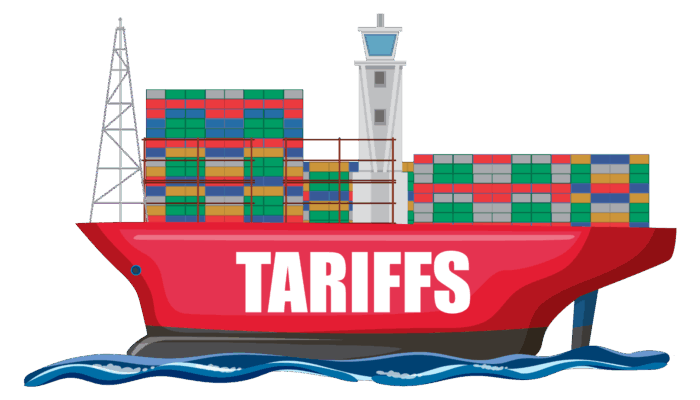Competition is fierce. Marketers at retailers and direct to consumer brands are under more pressure than ever. Increase brand awareness. Acquire new customers. Keep current customers loyal. More followers. More likes. To drive sales, your brand has to be seen. In the right places, by the right audience, at the right time. But digital advertising goes beyond impressions, likes, and clicks.
ROAS and Inventory: The Hidden Connection
Maximizing Return on Advertising Spend (ROAS) matters—a lot. Advertising rates are only increasing, which means more scrutiny on your budget. Sales conversions are key. But an ad won’t convert to a sale if there’s no stock available. And there’s no point advertising a product that is already selling well. Better to focus on slower moving stock. In short, if your ads are inventory aware, you can get a better return. Not to mention provide a better customer experience. Let’s look at how inventory availability impacts a customer’s ad experience.
The high Customer Experience (CX) Costs of Ads that Aren’t Inventory Aware
A customer sees one of your ads. They click. What happens next can typically go one of three ways. But they’re not all positive.
Scenario 1: Item shows as in stock, order is placed, customer receives their item Success! This is the happy path. The one we all expect. You’ve made a sale! And hopefully (assuming there were no delivery delays), you’ve kept your brand promise. So chances of a repeat purchase are high. But it doesn’t always work out this way.
Scenario 2: Item is out of stock or unavailable, no order placed
A potential customer scrolls their favorite social site. They see one of your ads. They’re intrigued. They click. Yet when they do…they see the dreaded “out of stock” message. Now they’re confused. Why was this product advertised if it’s not even available?! The confusion turns to frustration. They just had a bad experience. Will they click on one of your ads again in the future?
Scenario 3: Item shows as in stock, order is placed, but then canceled
A customer places an order. They’re excited. But a few hours later they receive an unexpected message. “Sorry, your order has been canceled.” Why? It turns out you don’t actually have it in stock. Cue that frustration and bad experience again. Now what? You have a really disappointed customer. A potential negative review. And you’ll have to spend even more on customer reacquisition.
In short, if your ads aren’t inventory aware, they could lead to a poor customer experience. But a poor CX is only one downside. Wasted ad spend is another.
3 Ways Inventory Data Can Prevent Digital Ad Spend Waste
The more you can optimize your digital ad spend, the more value you bring to the business. But if your ad management platform isn’t aware of actual inventory availability and SKU velocity, how can it optimize your ad placement strategy? In short: it can’t. But, imagine how it would improve overall business outcomes if you could:
- Stop showing digital ads for stockouts
This will free up your advertising budget to promote in-stock items that can convert to sales.
- Reduce ad spend on items that are selling
If you know how quickly inventory is moving, you can reduce spend on items that are already selling well and increase budget on slower moving items to increase inventory turns.
- Adjust spend to hit target sell through dates
If you know how much stock is left, you can fine-tune your ad spend to ensure stock moves fast enough to hit your target sell through date
What’s more, if you’re not spending on ads for items that are actually out of stock, you’ll reduce customer reacquisition costs, and close the gap between demand and revenue. Sound good? Then let’s look at how you can achieve it.
How to Make Your Ad Platform Inventory Aware
Where should you get the inventory availability data? While ERPs might be the inventory master, they’re not great at sharing data in real-time. Why not?
ERPs weren’t designed for real-time inventory data sharing
An ERP typically consumes inventory updates and Point of Sale (POS) transaction data in big batches, often only every few hours. Or overnight. But your inventory moves faster than that. Both in stores, and across your digital sales channels. What’s more, ERPs aren’t great at sharing data.
Typically, they can’t just send you an update of just the inventory positions that have changed. The deltas. They can only send a full data refresh. Which can take a long time to process. At which point, it’s out of date. So what’s a better approach?
An Enterprise Inventory Hub
That’s where an enterprise inventory hub, like Fluent Big Inventory, comes in. Fluent Big Inventory was purpose built to both consume and share inventory availability data with any other system– including your ad management platform—as fast as shoppers can browse and buy. No matter how heavy your inventory needs.
Summary
Ad budgets are big. Customer attention is short. So stop wasting that budget on ads that won’t drive sales and increase inventory turns. Or worse, lead to a poor customer experience.
To learn how you can make your ads inventory aware using Fluent Big Inventory, contact us today.



